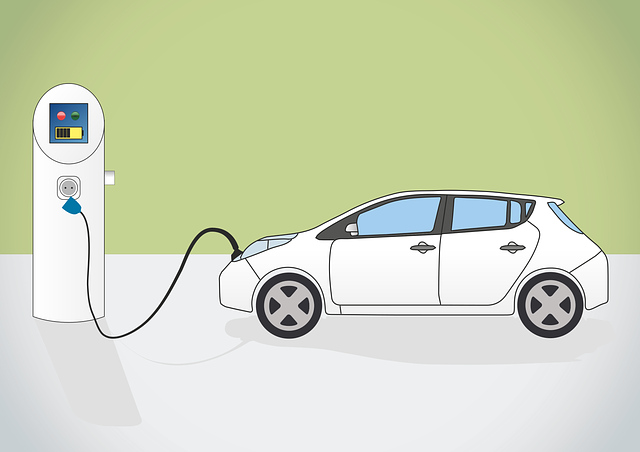Looking to register your car in California? This comprehensive guide breaks down the process step-by-step, ensuring a smooth transition. First, understand the state’s unique car registration requirements for both new and used vehicles. Then, gather essential documents for a crucial VIN (Vehicle Identification Number) verification process. After passing inspection, select your license plate design and complete the payment. Finally, submit your application and receive your official registration documents in the mail.
- Understand California Car Registration Requirements
- Gather Necessary Documents for VIN Verification
- Perform Vehicle Identification Number (VIN) Check
- Select and Pay for Your License Plate
- Submit Application and Receive Registration Documents
Understand California Car Registration Requirements

Before registering your car in California, it’s crucial to understand the state’s specific requirements. All vehicles operated on California roads must be properly registered with the Department of Motor Vehicles (DMV). This involves more than just providing necessary documentation; you’ll also need to undergo a comprehensive vin verification process. The vehicle identification number (VIN) inspection is a critical step in this procedure, ensuring that your car meets safety and environmental standards.
In California, a VIN inspection can be conducted at authorized facilities or even through mobile vin inspection services. These services bring the inspection to you, making it more convenient for busy individuals. By opting for a mobile vin verification, you avoid the hassle of visiting a DMV office and can potentially expedite the overall registration process.
Gather Necessary Documents for VIN Verification

Before you start the registration process in California, ensure you have all the essential documents ready for a smooth VIN (Vehicle Identification Number) verification. This step is crucial as it establishes the car’s history and authenticity. Gather important papers such as the title or certificate of sale, which shows proof of ownership. Additionally, bring along any relevant insurance documents and registration records from previous states, if applicable.
For a quicker process, consider using a mobile vin verifier or conducting a vin inspection yourself. These options allow you to verify the VIN’s accuracy and save time at the California Department of Motor Vehicles (DMV). Having these documents in order will make registering your car a breeze and prevent any potential delays.
Perform Vehicle Identification Number (VIN) Check

Before you can register your car in California, it’s crucial to perform a Vehicle Identification Number (VIN) check. This step is essential for ensuring that the vehicle you’re about to register is not stolen or has any outstanding issues. A mobile VIN inspection or vin verification service can help streamline this process by allowing you to obtain a comprehensive report on the vehicle’s history right from your smartphone.
By utilizing these services, like a mobile vin verifier, you can quickly verify the vehicle’s identification number (VIN) against national databases. This ensures that the car has not been reported stolen, has no outstanding loans or leases, and meets all necessary safety standards. Once you have confirmed the vehicle’s clean history through this vin inspection process, you’ll be one step closer to successfully registering your car in California.
Select and Pay for Your License Plate

After completing your vehicle’s registration application at the DMV, it’s time to select and pay for your license plates. This process is straightforward but requires careful attention to ensure a smooth experience. You’ll need to choose from various options available, including standard or custom plates, depending on your preference and vehicle type.
When selecting your plates, remember to utilize a reliable mobile vin verifier or conduct a vin inspection to verify your vehicle’s information. This step is crucial as it ensures the accuracy of data associated with your car, such as its make, model, and year. With this verification in place, you can confidently proceed with the payment process for your new license plates, completing another essential step in registering your vehicle in California.
Submit Application and Receive Registration Documents

After completing your vehicle’s inspection and ensuring all necessary repairs or modifications are made, it’s time to submit your application for registration. Gather all required documents, including proof of insurance, and fill out a California Vehicle Registration Application (Form DV-180). You can do this online through the California Department of Motor Vehicles (DMV) website or by visiting a local DMV office.
When submitting your application, make sure to include your Vehicle Identification Number (VIN) for vin verification. This process ensures the accuracy of your vehicle’s information and is a crucial step in the registration procedure. You can have a mobile vin inspection done by a professional service or use a mobile vin verifier app to facilitate this step easily from the comfort of your home. Once approved, you will receive your registration documents in the mail, allowing you to legally operate your vehicle on California roads.
Registering a car in California involves several straightforward steps, from understanding the state’s requirements to submitting the necessary documents. By gathering all required paperwork, performing a Vehicle Identification Number (VIN) check for accuracy, and selecting your license plate design, you’ll be well on your way to legally operating your vehicle. Remember, a successful VIN verification is key to ensuring a smooth registration process.
